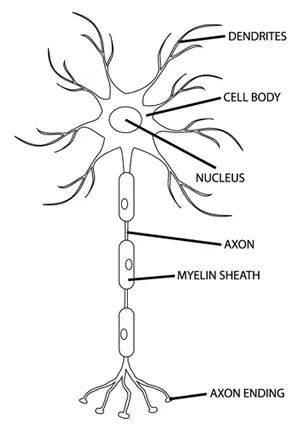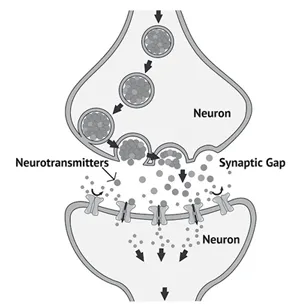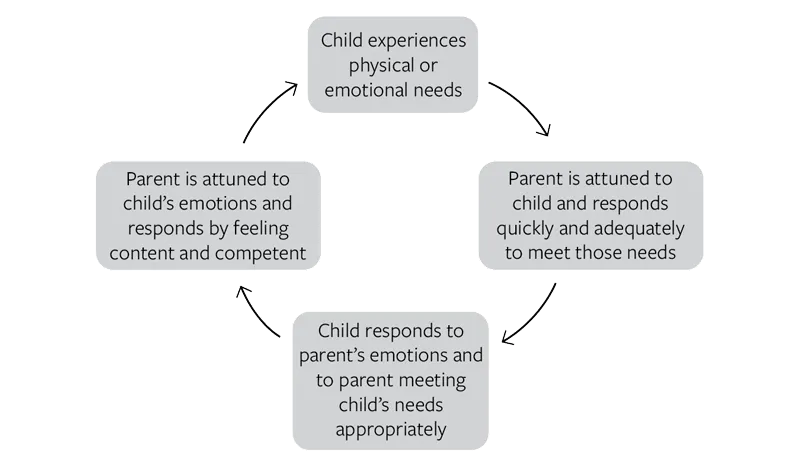
- 272 pages
- English
- ePUB (mobile friendly)
- Available on iOS & Android
eBook - ePub
About this book
According to the American Psychological Association, today's children and teenagers are anxious about many things. In addition to the stressors common to any generation--family issues, financial instability, pressure to perform in school or sports--these young people also worry about gun violence, social justice, the state of their divided nation, the fate of a warming planet, and much more. To top it off, recent global events and resulting restrictions have added significant stress even as they have stripped away support systems.
For parents, teachers, counselors, and youth leaders longing to understand and help the young people in their lives, When Anxiety Roars unpacks the biological, psychological, social, and spiritual factors that influence anxiety in children and offers specific practical steps to take together to tame that anxiety. Integrating faith with best practices to reduce anxiety, it also teaches coping skills that will help children live more confidently today and into the future.
For parents, teachers, counselors, and youth leaders longing to understand and help the young people in their lives, When Anxiety Roars unpacks the biological, psychological, social, and spiritual factors that influence anxiety in children and offers specific practical steps to take together to tame that anxiety. Integrating faith with best practices to reduce anxiety, it also teaches coping skills that will help children live more confidently today and into the future.
Frequently asked questions
Yes, you can cancel anytime from the Subscription tab in your account settings on the Perlego website. Your subscription will stay active until the end of your current billing period. Learn how to cancel your subscription.
At the moment all of our mobile-responsive ePub books are available to download via the app. Most of our PDFs are also available to download and we're working on making the final remaining ones downloadable now. Learn more here.
Perlego offers two plans: Essential and Complete
- Essential is ideal for learners and professionals who enjoy exploring a wide range of subjects. Access the Essential Library with 800,000+ trusted titles and best-sellers across business, personal growth, and the humanities. Includes unlimited reading time and Standard Read Aloud voice.
- Complete: Perfect for advanced learners and researchers needing full, unrestricted access. Unlock 1.4M+ books across hundreds of subjects, including academic and specialized titles. The Complete Plan also includes advanced features like Premium Read Aloud and Research Assistant.
We are an online textbook subscription service, where you can get access to an entire online library for less than the price of a single book per month. With over 1 million books across 1000+ topics, we’ve got you covered! Learn more here.
Look out for the read-aloud symbol on your next book to see if you can listen to it. The read-aloud tool reads text aloud for you, highlighting the text as it is being read. You can pause it, speed it up and slow it down. Learn more here.
Yes! You can use the Perlego app on both iOS or Android devices to read anytime, anywhere — even offline. Perfect for commutes or when you’re on the go.
Please note we cannot support devices running on iOS 13 and Android 7 or earlier. Learn more about using the app.
Please note we cannot support devices running on iOS 13 and Android 7 or earlier. Learn more about using the app.
Yes, you can access When Anxiety Roars by Jean Holthaus in PDF and/or ePUB format. We have over one million books available in our catalogue for you to explore.
Information
eBook ISBN
9781493434251Subtopic
ReligionONE
Why Children Don’t Act and React like Adults
On April 23, at 1:20 a.m., Dr. Jackson laid a 7 lb. 10 oz. bundle in my arms. In that moment, I stepped into an unknown world nothing in life had truly prepared me for. I became the mother of an amazing little girl—and realized I had absolutely no idea what I was doing. I had a degree in elementary education and had taught students from kindergarten through eighth grade, but all that education and experience hadn’t prepared me for the overwhelming sense of responsibility and inadequacy that accompanied this moment. Two days later, when my husband and I arrived home with our precious little girl, I walked into the living room, sat down, looked at her, and tearfully announced, “I don’t know how to do this without the nurses.” While I have no doubt part of this was the hormones, it remained a nagging feeling I experienced at various times throughout my years of childrearing.
I frequently wish parenting worked like baking. If you pick a good recipe and follow it exactly, you produce a wonderful dish every time. Unfortunately, there is no magic recipe for raising a child free from mental health concerns. You may resonate with my experience and be reading in hopes of finding answers to your questions and fears.
If you’re constantly attempting to “do it right,” I encourage you to let go of this ideal. There is only one perfect parent—our heavenly Father—and even his perfect parenting didn’t produce perfect children! All his children, with the exception of Jesus, face ongoing struggles throughout their lives. Although this reality is found throughout Scripture, many of us—especially those raised in the church—grew up believing something different. We were either directly taught or concluded through conjecture that trusting in Christ as Lord and Savior, routinely doing what Scripture commands, and avoiding things Scripture admonishes against produces lives free of struggle and children who mature to be well-adjusted, competent, God-fearing adults. While this may sometimes be true, the Bible is replete with examples of those whose deep faith and devotion didn’t prevent personal struggles, such as Paul’s thorn in the flesh (1 Cor. 12:7), or whose children were far from problem-free, such as David’s son and Eli’s sons (2 Sam. 15–19; 1 Sam. 2:12).
All of us—parents and children alike—are journeying to become all we were created to be. I am much wiser and parent more effectively now than I did during my children’s formative years. I once told my adult son I wished I could have a “do over” and parent his first eighteen years again with the knowledge and skill I now have. His response was to quip, “Mom, you would just make different mistakes.” Alas, he spoke truth! Mercifully, God is forgiving, children are incredibly resilient, and perfect parenting isn’t required to produce healthy adults. Our ability to parent effectively only grows when we approach parenting as a skill to be learned rather than something we should just know how to do.
You can incorporate the principles in this book into your parenting to foster your child’s mental health and self-esteem and create an environment where they feel safe, well-loved, and competent. As you read, there will be places you are invited to explore your current parenting technique to determine what changes might help your child learn effective ways of coping with anxiety. This book will offer you new ways to think about and interact with your child, which, when mixed with what you already know of good parenting, will help you effectively parent your child when they are anxious and when they are joyously celebrating their most recent accomplishment.
To start this journey, we will explore some basic differences between toddlers, children, teens, and adults. This will help you understand how the children in your life function differently than you do, and it will also provide a common framework to utilize throughout the rest of the book.
Children’s Brains

An infant is born with all the physiological structures of an adult in miniature form—including all the brain structures and all the neurons they will ever need. However, while infants and children physically resemble adults, anyone who has attempted to convince a screaming child there really isn’t a monster under the bed can attest to the fact they don’t think like adults. The human brain isn’t fully mature until the midtwenties and continually changes throughout life.
Neurons are the basic cells that make up the brain and the nervous system. Neurons receive input from the external world through the senses, transform the input into electrical signals, and relay those signals back and forth. This interaction of neurons forms our personality and our responses to the world around us.
Neurons are composed of a cell body, axons, and dendrites. Neurons produce energy in the form of various chemicals called neurotransmitters, which allow neurons to communicate with one another. Neurotransmitters flow down through the axon of one neuron into what is called the synaptic cleft—the gap between two neurons. They then attach to the receiving side, or dendrite, of a second neuron. This process is called a synapse.

As energy flows between neurons (firing) in the same pattern repeatedly, neural pathways are formed, causing specific thoughts, emotions, movements, and behavior patterns. While all neurons are present at birth, they haven’t learned who to communicate with and in what order they need to communicate to create things like speech or controlled movement. This learning occurs over the course of our lifetime. However, during the first three years of life, a child’s brain is growing faster than any other body part and forms over one thousand trillion connections between neurons.
At the same time, the brain is also engaged in a process called myelination, covering and insulating the axons of each neuron with layers of fat. When axons have been covered by this fat, called a myelin sheath, neurotransmitters can move along the neuron faster, which speeds up thinking and movement.
As neurons learn to fire together in sequence, the neurons used become stronger and faster. The brain simultaneously eliminates unused synapses and helps optimize the brain’s functioning. This process of forming new neural pathways, called neural plasticity, continues throughout our lifetime as we learn and grow. The development of these neural pathways is heavily influenced by our experiences in life and our genetic code.
Your child’s thoughts and ability to regulate their emotions differ from yours because different areas of the brain develop neural pathways at different rates. For example, the brain’s prefrontal cortex, where reasoning and thinking through the consequences of decisions occurs, develops more slowly and doesn’t fully mature until the midtwenties. In the rest of the chapter, we will explore the major differences in how children communicate, learn, and deal with emotions at different stages of development. You can read all the remaining sections of this chapter if the information seems helpful, but it may be better to skip to the section describing the stage of development your child is currently in, then consider reading the section before and after. As you read each of these three sections, pick out things that fit your child. Development doesn’t occur at the same rate for all children, so you may find your child functioning above their chronological age in some categories and below it in others. The age breaks are generalizations and shouldn’t be used to assess whether your child is ahead or behind where they “should” be. Next, read the last section in this chapter, “Applying What You Learned,” to think about how to utilize what you have learned.
Birth to Two Years
Infants are born without the ability to voluntarily control their emotions or behavior. They don’t have a sense of themselves as separate from their mothers until around age one. Infants and toddlers depend upon others to help them manage their emotions and to care for their needs. This does not, however, mean they don’t communicate effectively.
Communication
Infants are born with the capacity to intuitively sense the emotions of people around them, to respond to the emotions of others, and to communicate what they are feeling to others. Eight-month-old Suzie wakes from her morning nap alone in her crib with an empty stomach. In her discomfort, she begins to whimper. When this does not summon her caregiver, her whimpers turn into cries and then wails. Her mother, listening to the baby monitor in the kitchen while attempting to finish washing dishes, feels mildly anxious when Suzie stirs and begins whimpering. As Suzie’s cries intensify, so does her mother’s anxiety. The bond between Suzie and her mother, combined with the anxiety and discomfort Suzie’s crying creates within her mother, prompts Suzie’s mother to stop washing dishes and begin warming a bottle. As Suzie’s cries escalate to wails, her mother’s anxiety also escalates and increases her longing to satisfy Suzie’s needs so she will stop crying. She scoops Suzie up into her arms, gently rocking her while calmly talking to her and offering her a bottle. Mom’s anxiety calms as she begins actively working to calm her child. Suzie senses her mother’s calmness and this, combined with the bottle, soothes her fear so she relaxes into her mother’s arms and receives the love and food she needs.

This ability to communicate, combined with the bond between parent and child, creates a symbiotic relationship in which parents are attuned to their child and attend to the child’s needs, resulting in their child responding positively to having their emotional and physical needs met. This, in turn, causes parents to feel relaxed, content, and adequate. However, if something within this cycle breaks down, either the child’s needs won’t be met consistently or the parents’ ability to feel content and competent will be threatened.
Learning and Memory
Infants and toddlers use their senses and motor skills to explore and understand their world. Developmental psychologists describe them as “little scientists” because they focus on doing things and seeing what happens as a result.1 While adults have no conscious memory of the first years of life, they do remember the things learned during these years. Many of our memories from these first years are stored as visceral feelings without language to accompany them, making them difficult to recall as conscious memories.2 For example, as a toddler my son was scared by a black dog much larger than he was. For years afterward, he would have a visible visceral reaction to large dogs (especially if they were black). He couldn’t explain why he was afraid, but he was. His brain had stored the memory and was using it even though he couldn’t recall it.
Emotions
Infants enter the world experiencing two primary groups of emotions: distress/pain and contentment/pleasure. Their emotional experiences expand over the first two y...
Table of contents
- Cover
- Endorsements
- Title Page
- Copyright Page
- Contents
- Dedication
- Acknowledgments
- 1. Why Children Don’t Act and React like Adults
- 2. Normal Childhood Development or Anxiety?
- 3. Helping Children Understand They Are Not Their Anxiety
- 4. Biology Affects Anxiety
- 5. How Children Think and What They Think Affect Anxiety
- 6. Social Environments Affect Anxiety
- 7. Children’s View of God Affects Anxiety
- 8. Partnering with Your Child
- 9. Taming the Body’s Anxiety
- 10. Taming Anxious Belief Systems
- 11. Taming Anxious Thoughts
- 12. Taming Anxious Feelings
- 13. Taming Anxious Behavior
- 14. Moving Forward
- Appendix A: Attachment Style Inventory
- Appendix B: Growth Mindset Resources
- Appendix C: Feeling Words
- Appendix D: Feeling Faces
- Notes
- About the Author
- BackCover